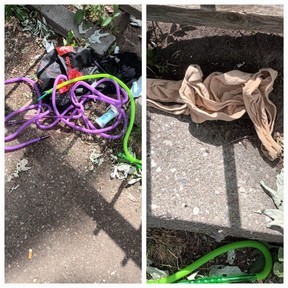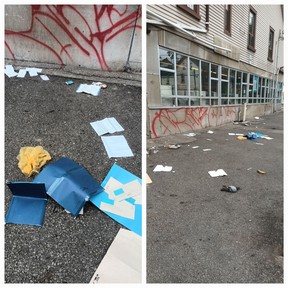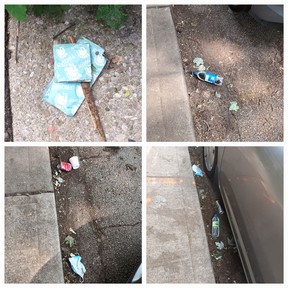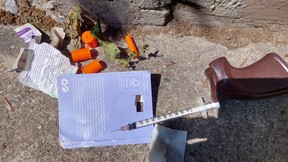風蕭蕭_Frank
以文會友恐怖!多倫多毒品注射站周圍照片曝光 社區居民天天噩夢
兩周前,一個周四的早晨,多倫多居民Matt去自家後麵的車庫,準備去拿他的回收箱。當時是早上8點左右,垃圾箱已經清空了,他想在上班前把它們收起來。
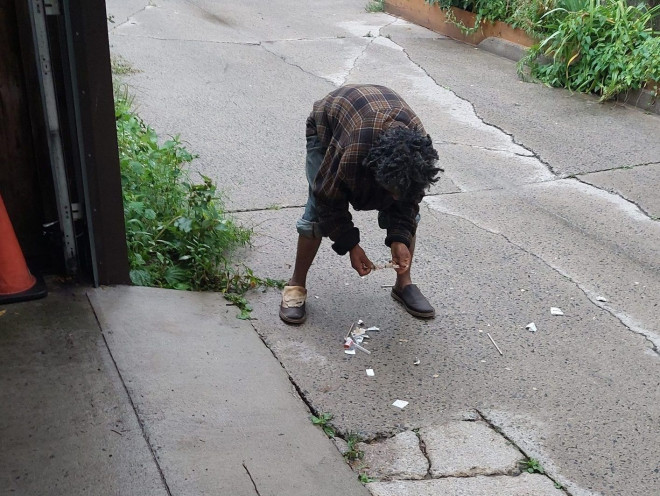
這個簡單的事情,結果居然變成了與一個癮君子的對抗,而且還被威脅要殺他。Matt似乎驚動了那個靠在車庫門上的人,接下來發生的事情很可怕。
那人反複地喊道:“我要殺了你!我要殺了你!”
這名男子繼續用手中的刀威脅Matt,並向他投擲玻璃裂縫管,隨後離開了。可怕的是,對於居住在所謂毒品“安全注射站”和“安全供應點”附近的居民來說,這並不是一個孤立的事件,這些地點遍布我們的城市。
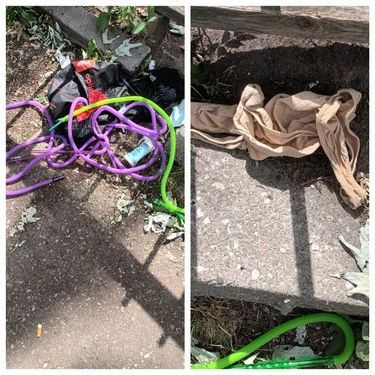
因為減少傷害而帶來的傷害
7月7日,當毒販在Queen St.和Carlaw Ave.的一個“毒品安全注射站”外爭奪地盤時,44歲,同時也是兩個孩子母親的Karolina Huebner-Makurat被一顆流彈擊中身亡,這一事件成為了人們關注的焦點。“減少傷害”(harm-reduction)項目的捍衛者聲稱,這起槍擊事件與提供的“安全注射”服務沒有任何聯係,這種說法與現實脫節。
The South Riverdale Community Health Centre (SRCHC)經營著兩個主站點:分別位於Queen和Carlaw,以及Sherbourne St.街。這些注射點附近的居民看慣了這些吸毒者的日常。
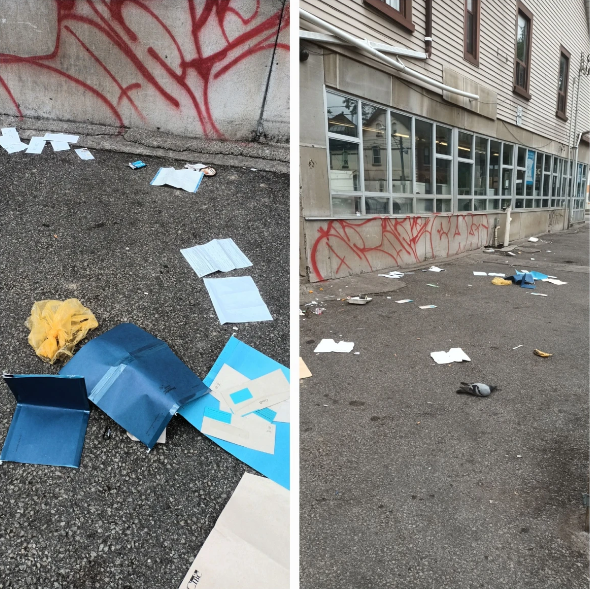
公共場所的性行為無時無刻不在發生,一個男人在不是自己居住的房子的台階上,進行手淫並給自己注射毒品。當地居民離開他們的家時,可以看到有人手上還紮著針昏過去。甚至有人為了打下一針,不惜入室偷東西盜取財物。
Evelyn分享了一條朋友發來的短信,朋友本來打算來看她,但覺得不安全。
這位朋友發短信說:“有人在你門前,我不敢進去。”
Evelyn說,在她家門前發現昏倒的人並不罕見。
為了安全,被采訪者的名字都做了更改,他們擔心說出來而遭到報複或在家中遭到抗議。
這些人中的大多數都不希望這些注射點被關閉,但安全問題卻一直沒有解決。
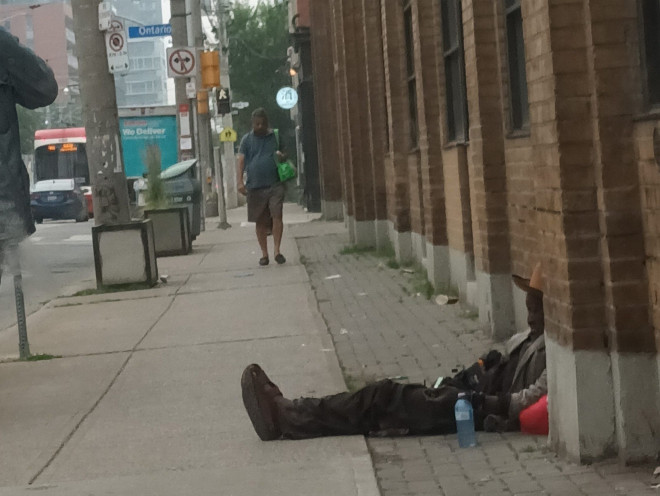
Jennifer描述了去年秋天的一個下午,她在家裏聽到了動靜。在查看的過程中,她發現一個精神緊張的男人在她小兒子的房間裏,想偷點什麽東西,這樣他可以把它賣掉換錢。
她的尖叫聲嚇住了男子,他隨後逃跑。。值得慶幸的是,沒有人受到傷害,但這個家庭現在覺得他們需要全天鎖上門,以防止毒癮者進入。
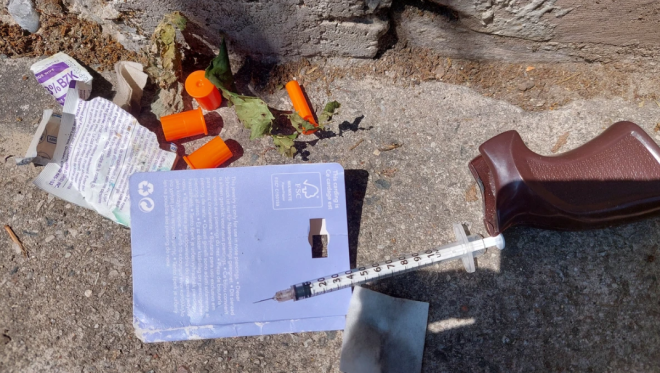
需要考慮安全注射地點對鄰居的影響
由於離注射中心很近,居民們不得不處理廢舊針頭、可卡因管、避孕套、嘔吐物、糞便等垃圾。然而,由於這些事件和垃圾並不是在中心發生的,因此它們不被視為是由設施及其運營引起的。
這些場所不僅提供了注射毒品的場所,而且還分發針頭和其他相關用具,現在還提供藥用級阿片類藥物。這些注射點就像磁鐵一樣吸引著毒癮者,也吸引著毒販。這些中心的影響不能簡單地通過使用這些設施的人的經曆來衡量,還必須包括對居住在附近的居民的影響以及如何應對後果。
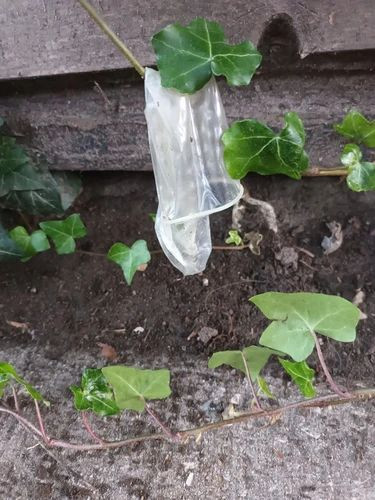
像 Matt,Evelyn和Jennifer這樣的人並沒有參與到關於SRCHC及其為吸毒者製定的計劃的成功或失敗的討論中,但他們應該參與進來。
該中心表示,他們的理念是尊重吸毒者。他們自豪地說:“沒有評判,沒有期望,不會希望人們停止使用毒品。”
這一令人震驚的聲明也許說明了為什麽對社區和居住在市中心附近的人的影響被忽視了這麽長時間。
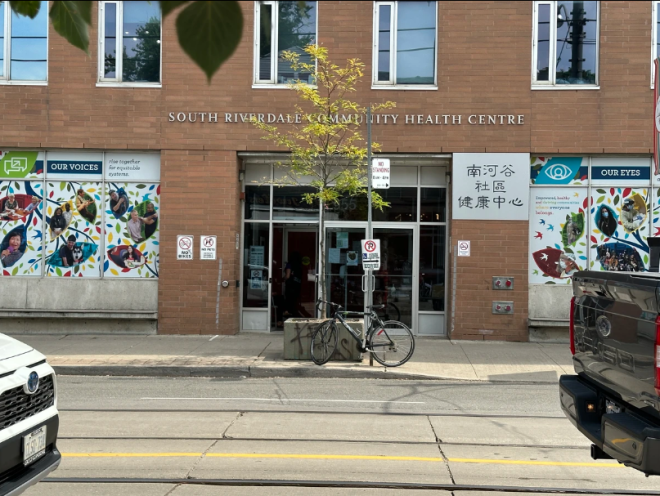
省級法規已經要求此類機構提供“現場或明確的成癮治療服務途徑”,這似乎是SRCHC所缺乏的。這些規定還包括“解決社區關切並確保社區持續參與的要求”。
在Karolina的死亡和隨之而來的社區憤怒之後,該省下令對Leslieville的SRCHC毒品注射點進行審查。讓我們希望那些負責進行審查的人花時間和周圍的居民交談,花時間參觀該地區。
LILLEY: Harm reduction programs unleash untold harm on neighbours
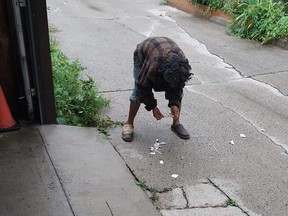
Two weeks ago, on a Thursday morning, Matt went to his garage in the back of his Toronto home to bring in his recycling bins. It was just after 8 a.m., the bins had been emptied and he wanted to tuck them away before going to work.
This simple task turned into a confrontation with a drug addict who threatened to kill him. Seems Matt disturbed the disturbed man who had been leaning against his garage door, and what followed was terrifying.
“I will kill you! I will kill you!” the man shouted, repeatedly.
The man went on to threaten Matt with the shivs in his hands and threw glass crack pipes at him before eventually walking away. Sadly, this isn’t an isolated incident for those who live near the “safe-injection” and “safe-supply” sites that populate our city.
Harm reduction brings harm
This issue came into focus on July 7 when Karolina Huebner-Makurat, a 44-year-old mother of two, was killed by a stray bullet as drug dealers argued over turf outside a “safe-injection” site at Queen St. and Carlaw Ave. Defenders of the “harm-reduction” program claim there is no way to connect the shooting to the “safe-injection” services on offer, a claim that is detached from reality.
The South Riverdale Community Health Centre (SRCHC) operates both the Queen and Carlaw facility and one on Sherbourne St., in Moss Park. Residents near these facilities are filled with stories about the impact the operations have on their daily lives. What they have to tell their fellow Torontonians is shocking.
Public sex acts at all hours, a man masturbating and injecting himself with drugs on the front steps of a home he doesn’t live in, people passed out with needles in their arms as local residents try to leave their homes — even what amounts to home invasions by those looking to steal what they can to score their next hit.
Evelyn shared a text message from a friend who was expected to come for a visit but decided it wasn’t safe.
“There are some people in front of your door and I am afraid to come in,” texted the friend.
Used needles, which can infect people who come into contact with them, are a common occurrence near harm reduction sites in Toronto.
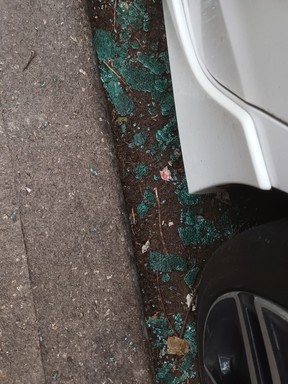 Broken glass at a car door. Vehicle break-ins are common near the harm reduction sites in Toronto.
Broken glass at a car door. Vehicle break-ins are common near the harm reduction sites in Toronto.
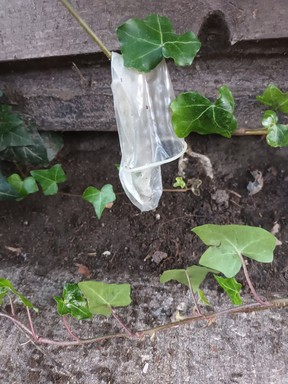 A used condom discarded by users of one of the Toronto's so-called harm reduction sites is a common sight for neighbours of the facilities.
A used condom discarded by users of one of the Toronto's so-called harm reduction sites is a common sight for neighbours of the facilities.
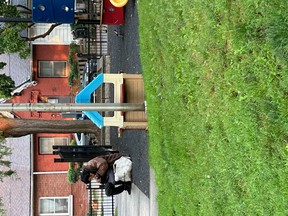 A man smoking what appears to be a crack pipe in a children's play park in a residential area near one of Toronto's harm reduction sites.
A man smoking what appears to be a crack pipe in a children's play park in a residential area near one of Toronto's harm reduction sites.
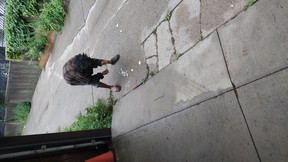 An east-end Toronto resident was startled to see this man in his back alley with drug paraphernalia after opening his garage and said he was threatened by him.
An east-end Toronto resident was startled to see this man in his back alley with drug paraphernalia after opening his garage and said he was threatened by him.
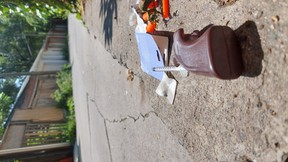 Drug paraphernalia, like needles, are regularly discarded in the side of the street or in alleyways near Toronto safe-injection sites.
Drug paraphernalia, like needles, are regularly discarded in the side of the street or in alleyways near Toronto safe-injection sites.
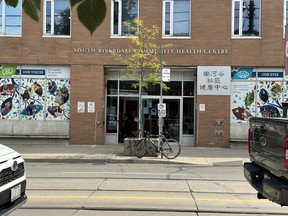 The South Riverdale Community Health Centre and safe injection site at 955 Queen St. E. on Friday, July 14, 2023. Photo by Jack Boland /Toronto Sun/Postmedia Network
The South Riverdale Community Health Centre and safe injection site at 955 Queen St. E. on Friday, July 14, 2023. Photo by Jack Boland /Toronto Sun/Postmedia Network
It’s not unusual, said Evelyn, to find people passed out in front of her home.
The names of the people in these stories have been changed at their request, concerned that they will face blowback or protests at their homes for speaking out. In hearing from those affected, it’s fascinating to learn how many believe in the safe injection sites and other harm-reduction programs, but feel the negative impact of these services on their communities — be it in Leslieville or Moss Park — are ignored.
Most of these people don’t want the programs shut down, but note there’s a failure to address the problems that come with them.
Jennifer described being at home one afternoon last fall when she heard a noise. As she investigated, she found a strung-out man in her young son’s room, looking for something to steal so he could sell it for his next hit.
Her screams startled the man who ran out of the home; thankfully, no one was hurt physically, but a family now feels they need to lock their doors at all hours of the day to keep addicts out.
Impact of safe injection sites on neighbours need to be considered
Residents have to deal with the litter of used needles, crack pipes, condoms, vomit, feces and more due to their proximity to these centres. Yet, because these incidents, and the litter, don’t happen at the centres, they aren’t counted as being caused by the facilities and their operations. But they should be; they must be.
These facilities, which not only give people a place to inject hard drugs but also hand out needles and other related paraphernalia, now also provide pharmaceutical-grade opioids. The sites act as magnets for users and for the drug dealers who prey on them. The impact of these centres can’t simply be measured by the experiences of those who use the facilities, but must also include the impact on residents who live near them and deal with the consequences.
People like Matt, Evelyn and Jennifer haven’t been part of the conversation about the success or failure of the SRCHC and its programming for drug addicts, but they should be.
The centre says their philosophy is about being respectful of those who use drugs. “No judgement, no expectations, no desire for people to stop using drugs,” they state proudly.
That shocking statement perhaps shows why the impact on the neighbourhood and those who live near the centre have been ignored for so long. Going forward, there should be judgement of the SRCHC; there should be expectations put upon them.
Provincial regulations already require such facilities to provide “Onsite or defined pathways to addictions treatment services,” something that appears to be lacking at the SRCHC. The regulations also include “requirements to address community concerns, and ensure ongoing community engagement.”
The province has ordered a review of the SRCHC’s drug programs in Leslieville in the wake of Karolina’s death and the ensuing community outrage. Let’s hope that those tasked with conducting the review take time to speak to those that live around it, take time to tour the area and look at more than what the centre’s staff want to show them.
Spending a few days in the areas around these sites and speaking to concerned residents would be truly eye-opening for anyone.




